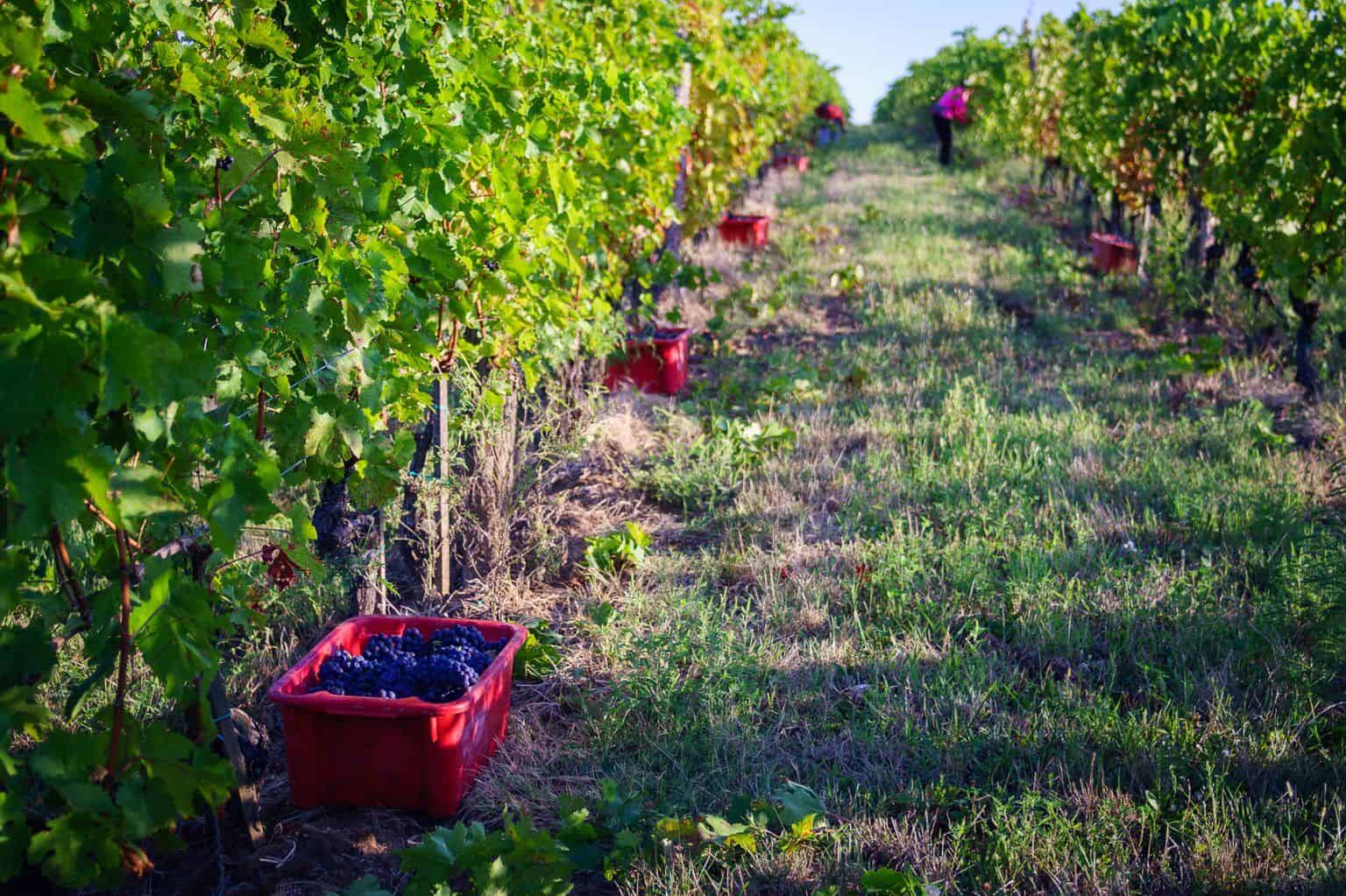
5 harvest facts for beginners
Vylyan Vineyard and Winery is an outstanding estate in Villány wine region. Obviously, the harvest period is the most important time of the year for them, and now they have collected five questions and answered them so that winelovers could have a better understanding of the importance of the harvest.
1. What does the beginning of harvest depend on?
Harvest should begin when the grape is fully ripened, its sugar content would not increase any more, its has the prober amount of acidity, the skin consists of the maximum amount of flavours and aromas typical of the variety. And when exactly is this magic moment? It depends on several factors.
– First of all we should take into consideration the characteristics of the variety. Some of the grapes ripen early, while others need more time. An early ripening white variety is Chardonnay, while out of black grapes Portugieser also ripens early. These grapes might be picked at the end of August or early in September. However, Olaszrizling (white) and Cabernet Franc ripen quite late – these grapes can be left in the vineyard as late as the middle of October.
– Apart from the variety, weather is another important factor. A long, rainy autumn does not make any good to the grapes, on the contrary, it can damage the crop. Similarly dry, hot September and October can be harmful, it can also have negative impact on the fruit, because it increases the sugar content of the berry, while it looses water and can start to shrivel. Therefore the viticulturist has to watch carefully, keep an eye on the weather forecast and check the fruit every day.
– The above mentioned factors meet a human factor: the decision of the winemaker. His way of winemaking, his thought of the future wine of the given vintage, the style he wishes to achieve – these things all have influence on the time of harvest.
2. What is ‘mock harvest’?
An important practice that helps find out the ideal moment for harvest. During the mock harvest we pick a small amount of grapes, press them and examine among other things its sugar and acid content and its pH value. Mock harvest might be repeated several times. When we believe that the grape achieved its proper ripeness, harvest can begin!
3. Does the way of harvest (manual or machine) influence the quality of the wine?
The quality of the wine is influenced by several factors, and the way of harvesting is just one of them. Machine harvest is obviousle faster and more effective. A big advantage is that in case of hot weather harvest can continue at night. Traditional hand harvest also has advantages: if the pickers are experienced, hand harvest is more gentle to the grapes and sorting can start in the vineyard. For some styles of wine whole bunches are needed and machines cannot pick whole bunches, thus for these wines hand harvest is inevitable. As a conclusion, both ways have their advantages and their roles at a wine estate.
4. What signs may predict the quality of a vintage?
In an ideal case the weather conditions are optimal, the vine receives all the necessary nutrients and water, it is not affected by any diseases and grows to be healthy until the harvest. If all these conditions are provided, we can expect a great vintage. However, it is not given in every vintage – unfortunately.
When judging a vintage, it is worth examining the mile stones of the life the vine connected to its ripening phase. The vintage is outstanding, if the weather is ideal at these important occasions – for example the “lachrymation” of the vine, the growing of the sprout, flowering, the appearance of the berries and later the ripening of the berries. Certainly there might be huge differences in the varieties and regions – even in vineyards – and there can be different outcomes in the very same vintage. It is a most complicated process, the result depends on the characteristics of the wine region, the micro climate, the exposure to the sun, the needs of the variety. Thus iz is not easy to make any judgement on a vintage in general.
5. Destemming, crushing, pressing – what happens to the harvested grape?
The exciting journey of the grape berry continues with the grape processing. The first step is destemming: berries are separated from the bunch because we must protect them from the unwanted tannin content of the stem – it might make our must taste unpleasant.
It is followed by the crushing of the berries, which is a gentle process – in spite of the meaning of the term ‘crushing’. We gently crush the skin of the grape and press the flesh of the fruit without squeezing the seed. Most of the juice simply runs off the crushed grape. The rest of the must can be obtained by more pressing, but we cannot fall into extremes, otherwise the marc (the remaining skin and seed) will give an unpleasant bitter flavour to our must.
The resulting must will transform into wine through the process of fermentation, but that is another story…
More about Vylyan Vineyard and Winery







